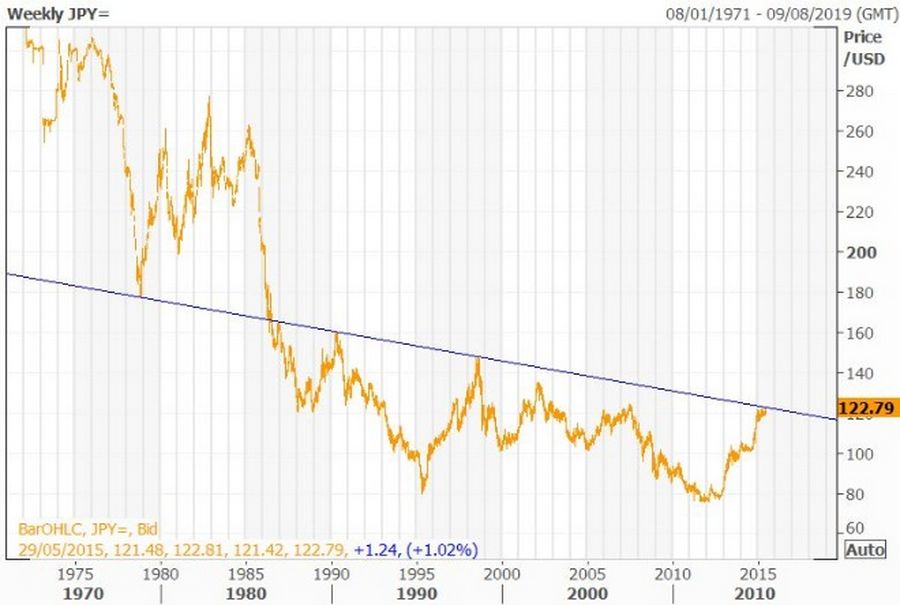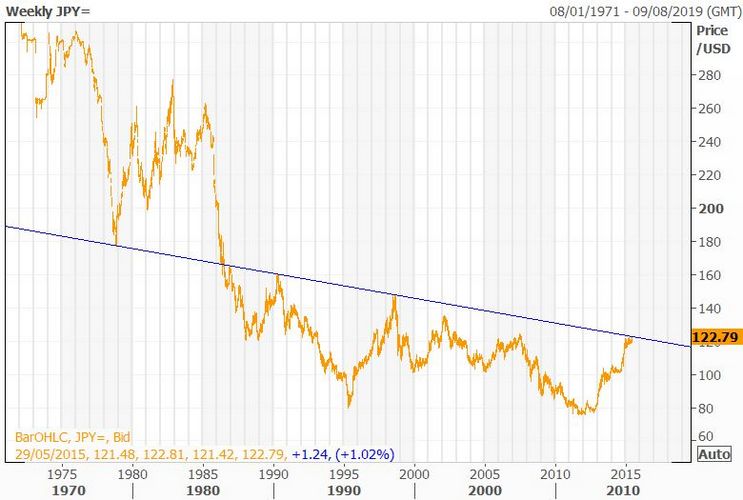Two central banks are left holding the QE baton from the Fed and BoE, leaving the divergence monetary policy cycles ever more stark as USD/JPY zooms in on a major trendline.
Much of this year’s focus has zeroed in on a EUR move that the ECB sees as a “natural by-product” of “monetary policy independence and divergence” (ECB’s Coeure speech on May 12). In contrast to EUR’s almost 10% depreciation vs USD, JPY has only weakened by less than 2.5% so far this year, much of it in the past two weeks.
Today’s USD/JPY acceleration higher is significant as it now sees USD/JPY make a peak above a trendline in place for more than 30 years.

Yen
This trendline has historically proved both crucial support and resistance: support in 1978 and in 1986 following the break lower, but also resistance a number of times, especially since 1998’s huge carry trade unwind and cross/yen plunge.
We are once again at a major make-or-break juncture on USD/JPY, with the risk that a topside break creates the risk of much greater upside on USD/JPY than one would normally expect for this recently docile pair.
Unlike the BoJ easing of early 2000s when ZIRP/QE was enacted half-heartedly, Kuroda’s QQE (quantitative and qualitative easing, targeting a specific rate of inflation) has been more aggressive and wide reaching. Even with the USD long shakeout for the past month, policy divergences are clearly having a stronger impact than one would normally expect – especially as the Fed looks to start normalizing policy likely this year.
How to play a higher USD/JPY depends upon how fast one feels that the unit will move toward 130 or 135. If you think the move will be slow and gradual than consider taking a look at a 6-month 130 USD put/JPY call with a RKO at 119 which has a theoretical cost of 89 pips. But if you think that the trend can potentially accelerate then a 1-year 130 USD call/JPY put with a knock-out at 119 has a theoretical cost of 123 pips.

